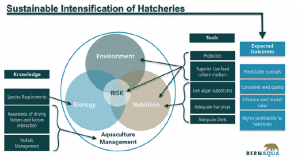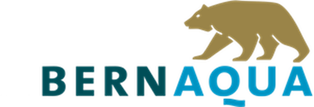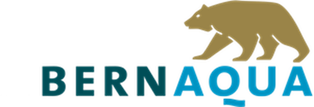Marine finfish hatchery technology, sustainable intensification with
precision management as a solution for high reliability
and quality of fingerling.
26 July 2019
Sustainable intensification of aquaculture has been the main contributing factors to the growth (ten percent per annum) of the aquaculture industry in Asia-Pacific (APAC) during the last 30 years (1).
While the aquaculture in the region continues to growth in line with the global increase in seafood demand, most marine hatcheries in APAC still rely on traditional methods of production. Several of the high value species such as groupers, cobia and seabass are well stablished in the traditional methods, however inconsistency of production and quality remains a challenge.
Mesocosm is the most prominent of the traditional methods. It consists in a pelagic ecosystem inoculated with phytoplankton and zooplankton which continues to propagate in the rearing vessels, serving as natural food source for the reared fry (2).
The choice for low intensity systems relates to a few bottlenecks in the mass production of quality fingerling (3). In grouper hatcheries for instance, survivals are low with high mortalities during larval stages (4).
The main challenges for grouper hatcheries are: availability of quality eggs, small size larvae which leads to small functional mouth at first feeding, limiting the choice of live feeds, larvae are sensitive to physical disturbances and environmental fluctuation, production of sufficiently small live prey with adequate nutritional value and cleanliness.
The key for successful intensification of hatcheries lays on in-depth knowledge of species welfare, including: nutritional and environmental requirements along with behavioral factors, which needs to be addressed with management.
Intensification leads to higher dependency to external inputs, sufficient application of technology, continuous assessment and precision management. Main benefits of hatchery intensification are: higher yields, reliability of production and quality of produce. Furthermore, intensive hatcheries are more efficient in the use of resources such as land, water, feed, and energy, leading to environmental, economic benefits (5).


-
Miao, W. and Lal, K.K. (Ed.) (2016) Sustainable intensification of
aquaculture in the Asia-Pacific region. Documentation of successful practices. FAO, Bangkok, Thailand.
-
Lavens, P. and Sorgeloos, P. (Ed.) (1996) Manual on the production
and use of live food for aquaculture FAO Fisheries Technical Paper. No. 361. Rome, FAO. 1996. 274p.
-
Kohno H., et al (1997) Why is grouper larval rearing difficult?: anapproach from the development of the feeding apparatus in early stage larvae of the grouper, Epinephelus coioides. Ichthyological Research 44: 267–274.
-
Rimmer, M. A. and Glamuzina, B. (2019) A review of grouper (FamilySerranidae: Subfamily Epinephelinae) aquaculture from a sustainability science perspective. Rev Aquacult, 11: 58-87.doi:10.1111/raq.12226
-
Engle, C. R., et al (2017), Economics of Sustainable Intensification of Aquaculture: Evidence from Shrimp Farms in Vietnam and Thailand. J World Aquacult Soc, 48: 227-239. doi:10.1111/jwas.12423

